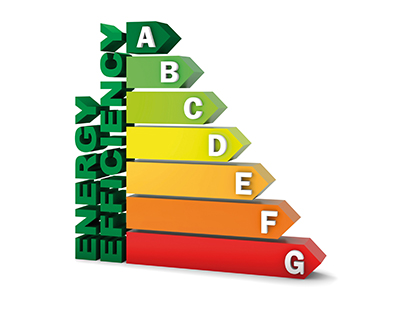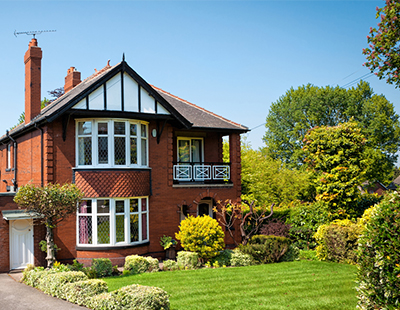The Green Homes Grant scheme went live on September 30 2020, offering landlords and investors the chance to apply for £5,000 worth of vouchers to put towards energy-saving and energy efficiency-enhancing home improvements. The scheme comes to a close at the end of March 2021, but heating systems manufacturer Viessmann has come up with a list of the six best energy-saving home improvements for people to spend their Green Home Grant vouchers on – a list which will still be relevant when it comes to home improvements even after the Green Homes Grant initiative ends.
The tips include draught-proofing doors, insulating cavity walls and installing double glazing, and each come with a breakdown of the average costs. All been recommended by Viessmann as the improvements which would see people save the most money on their energy bills annually.
The grants, which form part of a wider £3 billion ‘green investment package’ to help rebuild the economy after the pandemic and help the UK meet its 2050 target of achieving net-zero carbon emissions, means homeowners can apply for vouchers up to £5,000 per home to put towards energy-saving home improvements.
With the vouchers to be spent at the discretion of homeowners included landlords and property investors, the experts at Viessmann have revealed their six top picks.
“There are a range of property enhancements that homeowners can choose within this scheme, from essential insulation to investing in a new heat pump,” Darren McMahon, Viessmann marketing director, says.
“Choosing more than one of the available measures is most likely to help reduce heat loss and increase the efficiency of the heating system, and make the biggest difference to homeowners’ bills.”
Below, he outlines the six best options.
Suspended floor insulation (Average cost: £150)
Due to the laws of thermodynamics, cold air falls and warm air rises, and as this air naturally circulates below ground-level floorboards, the small gaps between each can add up to the equivalent of a small window.
You wouldn’t leave your windows open in the winter, so it makes no sense to leave your floorboards untreated for this heat loss and it will improve your personal comfort, too. The average cost of this home improvement is around £150 when done professionally.
Draught proof your doors (Average cost: £75)
Similarly to the floorboards, the gaps between doors can allow lots of air to escape if not properly insulated.
By working out which doors are letting in the draught and applying draught excluders around the frames, this can prevent the cold air from getting in and any warm air escaping. These are a cheaper installation at around £75 on average to draught-proof multiple doors.”
Insulate your loft (Average cost: £100)
By putting insulation inside the loft, this will ensure that heat from the home won’t exit via the roof. Choosing to insulate your loft is also an easier job than insulating individual rooms which can get messy and long-winded.
Loft insulation procedures average out at around £100, but this cost is totally dependent on the size of your home too and the type of insulation you decide to install.”
Insulate cavity walls (Average cost: £600)
Houses that are more than 20 years old, more often than not, have cavity walls that are empty of any insulation.
Since around a third of heat loss from most homes is through the walls, this is one of the most essential home insulation improvements that will also help you save on your future energy bills, with an average cost of £600.
Install double glazing (Average cost: £4,000)
Although most modern homes come with double glazing as standard, many older homes are still without or tend to only have double glazed windows at the front of the house. But draughty windows are a big contributor to heat loss in the home and this results in wasted money and energy. It’s no use installing heat sources into the home if the heat is literally disappearing out of the window.
With double glazing, the additional pane of glass acts to keep more heat in and the air that’s trapped between the two panes provides extra insulation.
The average cost of getting double glazing installed is around £4,000 based on a traditional pre-1960s semi-detached home. It also depends on how many windows are being installed. Now is a good time to make use of the government grant and upgrade your windows to ensure large energy savings.
Install a heat pump (Average cost: £7,000)
Heat pumps, whilst initially more costly than traditional fossil-fuelled boilers, are a great way to adopt renewable technology and harness ambient energy from the air or ground even during the winter.
As they are a low-temperature heating system, they may require investment in home improvements, such as insulation and other areas outlined above, to run in an energy-efficient way. However, in the right environment they are extremely efficient, reducing running costs for homeowners, reducing the use of fossil fuels and the production of carbon and as such, they are also great for the environment.
They can either be incorporated into your existing heating system as an additional source of heat (called hybrid or bivalent) or fitted as standalone replacements to your current boiler and once installed, you should see an immediate drop in your bills, with an average saving of £216 annually in the home, subject to how well your home is insulated and the heating package which has been specified.
You can find out more about Viessmann here. And more about the Green Homes Grant scheme here.
Want to comment on this story? If so...if any post is considered to victimise, harass, degrade or intimidate an individual or group of individuals on any basis, then the post may be deleted and the individual immediately banned from posting in future.















.png)





Join the conversation
Please login to comment